
Audience Navigation
Utility Navigation
Student Blogs
Corregidor
Last Saturday, my Fulbright colleague, Zach, and I boarded the fast boat from Manila Bay to Corregidor 40 kilometers away giving us the opportunity to go see the famous Philippine-American fortress during World War II. This trip was a very exhausting trip both physically and emotionally.
Corregidor is like a cemetery national park. Unlike most battlefields that are dedicated to restoring sites to pristine condition, Corregidor is dedicated to preserving the destruction in these sites during the Defense of the Philippines in 1941. The devastation from the bombardment is palpable. You can really see how the campaign to oust the combined American-Filipino force took a toll on the buildings and the communities that were in place. Corregidor used to have its own theater, recreation center, and golf course but today it remains a national park formed by ruins and memorials to the fallen.
The History major at Holy Cross taught me to look beyond history as the passage of events, so I ended up making my own in depth analysis of Corregidor particularly in the discipline of the history of memory (how we remember our history and how those narratives change over time). It is clear that the park unapologetically portrays Allied forces as the just victors in the Pacific War. The video on the fast boat to Corregidor made it clear that the Allied forces of the US and Filipino Army are the victors. By 1945, the Japanese were undone, defeated, and ousted out of a position they maliciously tried to take. Many monuments suggest that the sacrifices made by Filipino and American servicemen and women were done at the price of freedom and a better world. And many of us have learned that this is the case through movies, TV, and books on the subject.
And yet, this idea of a righteous victory over the Japanese is not the overarching message that the island tour has to offer. While it is suggested that the Japanese defeat made the world a better place, it also acknowledges that ample suffering that went around on both sides. This idea hits home hard with the Malinta Tunnel tour. Malinta Tunnel was an underground complex made by the American and Filipino army before the War that served as the headquarters for both Filipino-American combined forces and Japanese forces. During the tour, visitors get a simulated experience of both defenders through a presentation of the continuous bombardment by the Japanese Navy and Army on American and Filipino defenses segued into a simulation of the Japanese mass suicide by grenades during the eventual return of Corregidor to American and Filipino forces.
This left me wondering just how complicated talking about the War is in a contemporary setting. I’m standing on an island that is a grim reminder of a type of warfare we may never see in our lifetime, far removed from the reality of the events 70 years ago. All total, the casualty listings at the end of the Philippine Defense Campaign were nearly 40,000 American men and women killed or captured with 100,000 Filipinos in the same figure. Japanese casualties in the first Philippine Campaign totaled 22,000 and nearly 400,000 in the second.
To complicate things further, the island offers many sites that honor the Japanese soldiers who died in combat. There are two shrines that overlook the West Philippine Sea, one Shinto, and the other Buddhist. While looking at the shrines, I found a Japanese couple doing a Shinto prayer.
General MacArthur’s famous speech after the defeat in the Philippines had the phrase: “I shall return.” It was a very penitent and personal statement at what had been such an unforgiving campaign. Although that speech was made 70 years ago, I feel those words ring true today when you step foot on Corregidor. You make a return to a time when warfare was asking so much of everyone, when it was acceptable for the military to ask men and women to step up to the plate and “make a sacrifice bunt.”
Overall, the trip felt more like a journey towards truth than a sight seeing tour. And even as we approached the island of Corregidor, the skies were overcast, visibility was low, and the water was choppy. It felt more like a travel of time and space rather than distance, like we were going to visit the town of Brigadoon. I was not going just as a tourist or a sightseer; I was going to make amends with the past. I felt like a shaman conjuring the spirits of his ancestors, trying to understand what happened on the island of Corregidor and how we live today because of the actions of the men and women before us. It wasn’t just studying history; it was stepping inside it, looking beyond the murky clouds of the past and finding truer meaning in the present.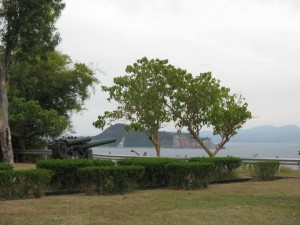
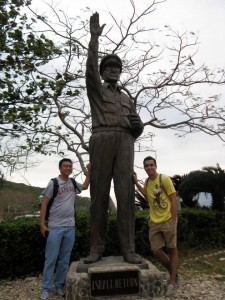
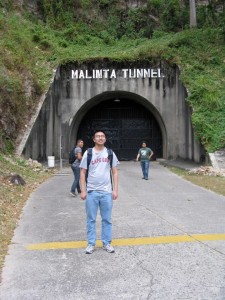
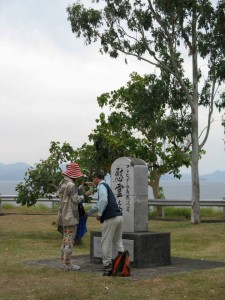

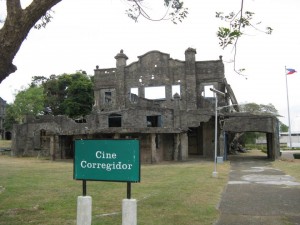
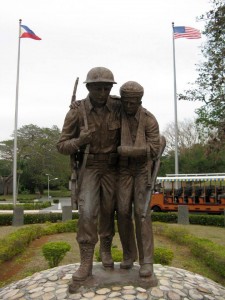
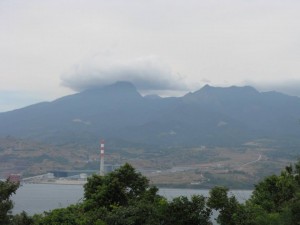
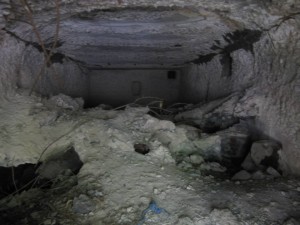
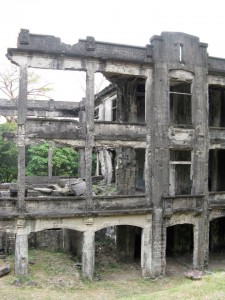

Paul Fontelo '13
- Studies: History and music double major
- Hometown: Potomac, Md.
- Alumni
- Read more about Paul »
 Emily Castillo '19
Emily Castillo '19
Former Blogger Gianna DiMaiolo '19
Gianna DiMaiolo '19
Former Blogger Brian Senier '19
Brian Senier '19
Former Blogger Amy Casey '18
Amy Casey '18
Former Blogger Michael DeSantis '18
Michael DeSantis '18
Former Blogger Alexandra Larkin '18
Alexandra Larkin '18
Former Blogger Emily Breakell '17
Emily Breakell '17
Former Blogger Haylie Butler '17
Haylie Butler '17
Former Blogger Ellen Chen '17
Ellen Chen '17
Former Blogger Jessica Vozella '17
Jessica Vozella '17
Former Blogger Caroline Keane '17
Caroline Keane '17
Former Blogger Hildie Hoeschen '17
Hildie Hoeschen '17
Former Blogger Elena Ferguson '17
Elena Ferguson '17
Former Blogger Thomas Vignati '17
Thomas Vignati '17
Former Blogger Holly Nord '16
Holly Nord '16
Former Blogger Ali Olson '17
Ali Olson '17
Former Blogger Jonathan Thompson '17
Jonathan Thompson '17
Former Blogger Bryan Rodriguez '17
Bryan Rodriguez '17
Former Blogger Inez Asante '16
Inez Asante '16
Former Blogger LiAnn Butterfield '16
LiAnn Butterfield '16
Former Blogger Lauren Tilmont '16
Lauren Tilmont '16
Former Blogger Mary Zabinski '13
Mary Zabinski '13
Former Blogger Katharine Shapleigh '13
Katharine Shapleigh '13
Former Blogger Kelsey Horton '13
Kelsey Horton '13
Former Blogger Rosemary Henry '14
Rosemary Henry '14
Former Blogger Kevin Gallagher '13
Kevin Gallagher '13
Former Blogger Vivian Daly '13
Vivian Daly '13
Former Blogger Sarah Rondeau '13
Sarah Rondeau '13
Former Blogger Katie Riley '14
Katie Riley '14
Former Blogger Andrew Retallick '14
Andrew Retallick '14
Former Blogger Connor OBrien '16
Connor OBrien '16
Former Blogger Melissa Nelson '10
Melissa Nelson '10
Former Blogger